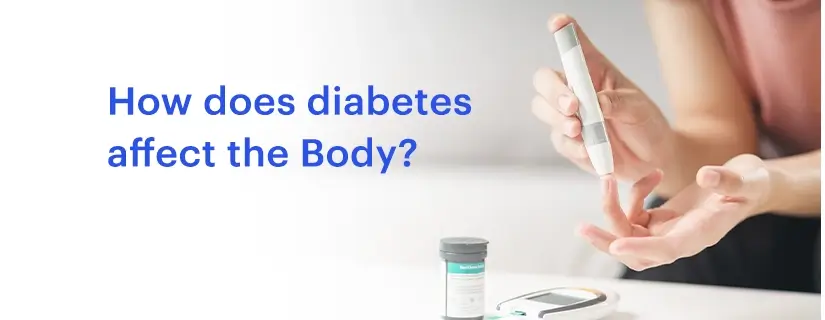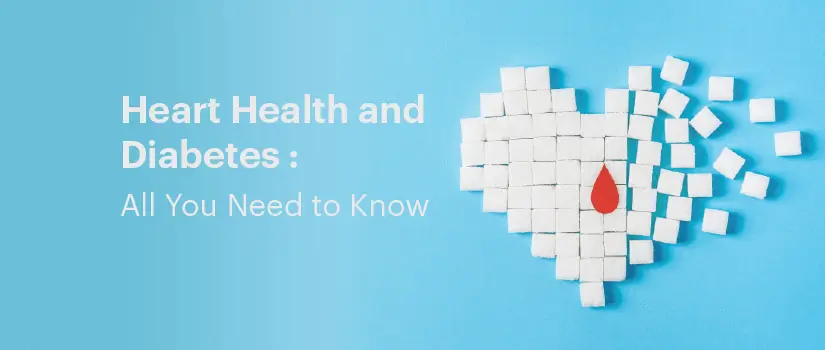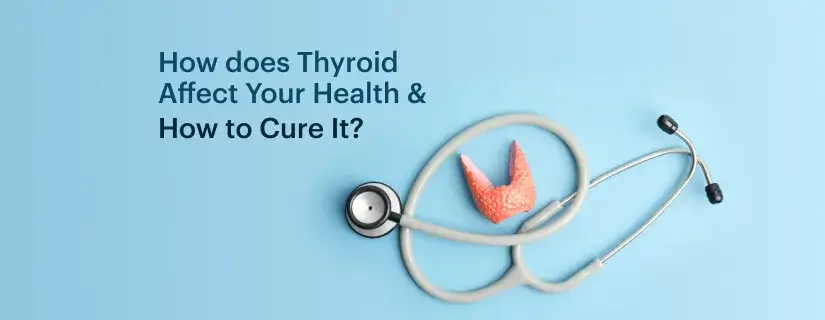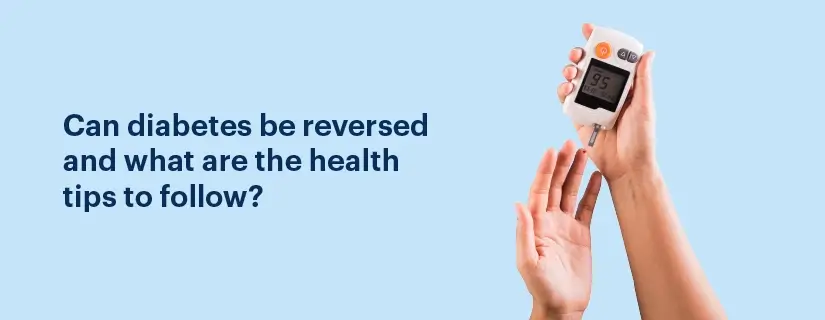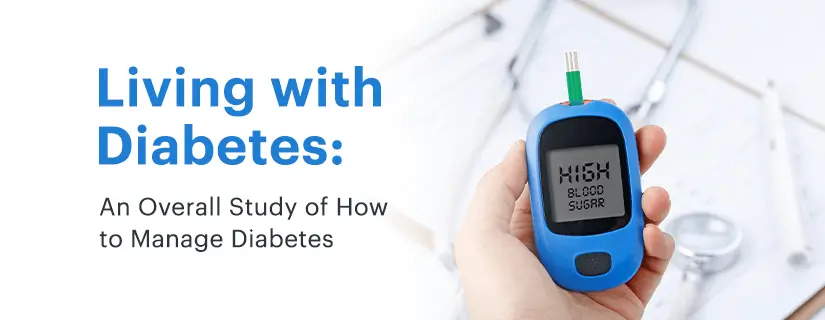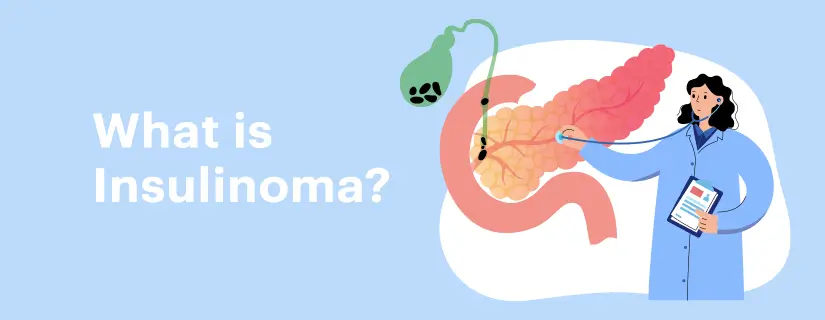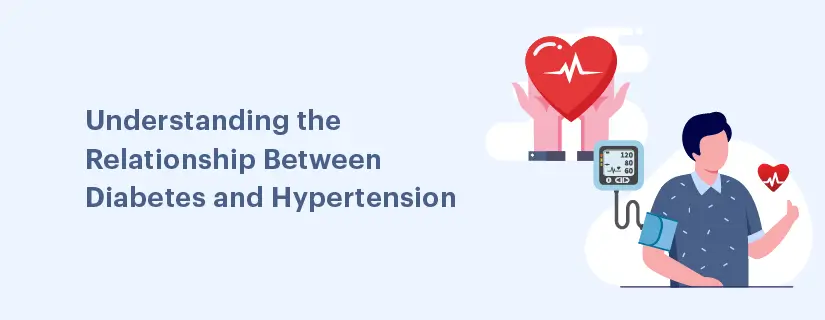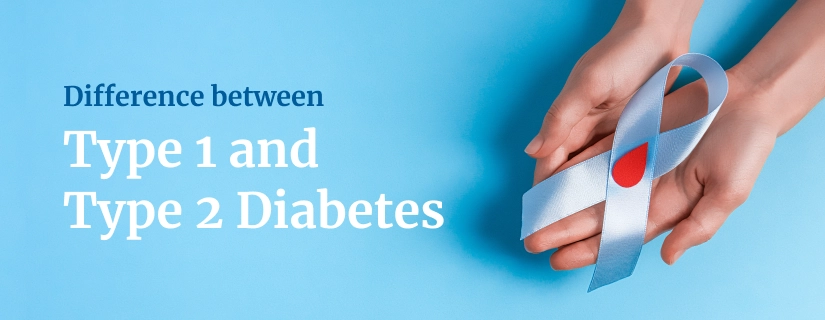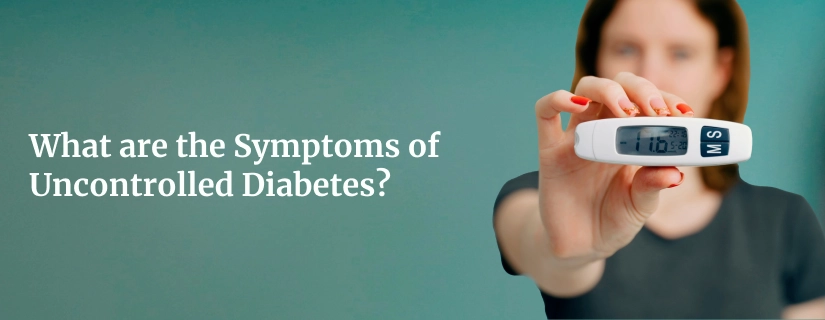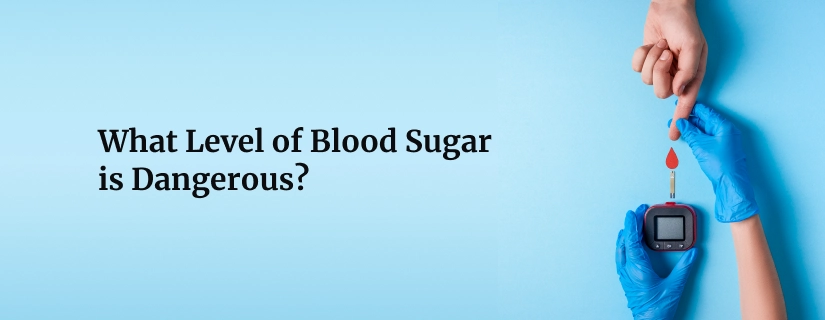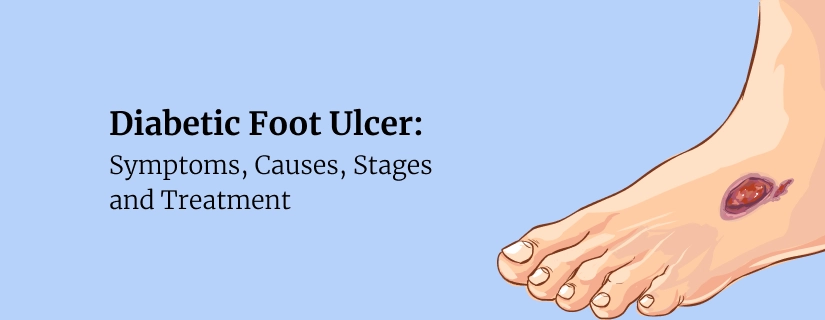-
Doctors
-
Specialities & Treatments
Centre of Excellence
Specialties
Treatments and Procedures
Hospitals & Directions HyderabadCARE Hospitals, Banjara Hills CARE Outpatient Centre, Banjara Hills CARE Hospitals, HITEC City CARE Hospitals, Nampally Gurunanak CARE Hospitals, Musheerabad CARE Hospitals Outpatient Centre, HITEC City CARE Hospitals, Malakpet
HyderabadCARE Hospitals, Banjara Hills CARE Outpatient Centre, Banjara Hills CARE Hospitals, HITEC City CARE Hospitals, Nampally Gurunanak CARE Hospitals, Musheerabad CARE Hospitals Outpatient Centre, HITEC City CARE Hospitals, Malakpet Raipur
Raipur
 Bhubaneswar
Bhubaneswar Visakhapatnam
Visakhapatnam
 Nagpur
Nagpur
 Indore
Indore
 Chh. Sambhajinagar
Chh. SambhajinagarClinics & Medical Centers
Book an AppointmentContact Us
Online Lab Reports
Book an Appointment
Consult Super-Specialist Doctors at CARE Hospitals
What Helps Diabetic Wounds Heal Faster?
Updated on 5 January 2024
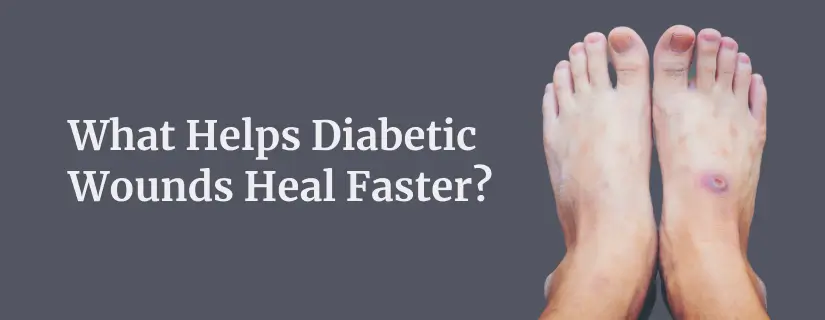
Table of Content
- How Does Diabetes Affect Wound Healing?
- Why does diabetes affect wound healing?
- Why Does Diabetes Cause Slow-Healing Wounds?
- What Can Happen if Wounds Are Left Untreated?
- How or What Helps Diabetic Wounds Heal Faster?
- When to See Your Doctor?
- Complications
- Treatment
- Prevention
- How to promote long-term health and healing
- FAQs
Minor cuts and scratches are quite normal. But for people with diabetes, having a wound is a nightmare. This is because sometimes it does not heal, leading to amputation of the affected area. The diabetic wound on legs is one of the most common wounds that a person with high diabetes experiences. A small scratch might lead to wounds that might take a lifetime to heal. This is due to several factors, such as low immunity, blood thickening, etc., that contribute to the slow healing of wounds. However, proper care and an early visit to the doctor can reduce the risk of wounds getting extreme and might help in healing a diabetic wound faster.
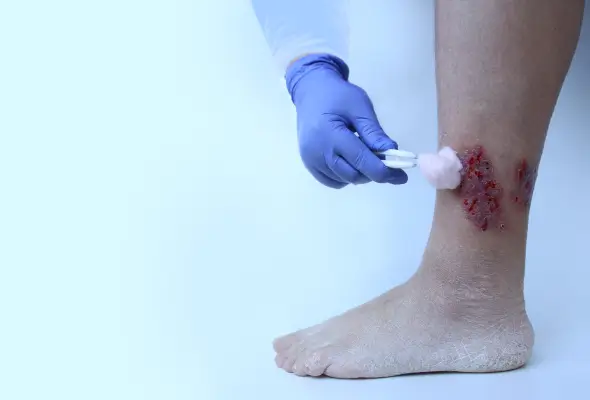
How Does Diabetes Affect Wound Healing?
Diabetes impairs how the body produces insulin. It is a hormone that allows the cells to use glucose from the bloodstream. Thus, a disruption in the insulin causes the blood sugar to fluctuate. Due to an increase in blood sugar, the white blood cells of the body stop functioning normally - which puts the defence of the body at risk. Thus, the body cannot fight off infections and bacteria, causing delayed diabetic wound healing.
Also, untreated or high blood sugar causes the blood to thicken, which causes a delay in the diabetic wound healing, and sometimes the wound does not heal at all - leading to amputation. Here are some of the other reasons why diabetes affects wound healing -
- Reduced production of growth and healing hormone
- Reduce collagen production
- Reduced blood vessel repair
- Weakening of skin barrier
Why does diabetes affect wound healing?
Diabetes affects wound healing for several reasons, primarily due to the impact it has on blood flow, immune function, and cell regeneration. Here’s how diabetes slows down the wound-healing process:
- Poor Circulation: High blood sugar levels can damage blood vessels, reducing circulation, especially to the extremities. Poor blood flow means less oxygen and nutrients are delivered to the wound, which are essential for tissue repair and healing.
- Weakened Immune System: Diabetes weakens the immune system, making it harder for the body to fight infections. Wounds can become easily infected, and an infection further delays the healing process.
- Nerve Damage (Neuropathy): Diabetic neuropathy, or nerve damage, can reduce the sensation in certain parts of the body, particularly the feet. As a result, small cuts or wounds might go unnoticed and untreated, allowing them to worsen.
- High Blood Sugar Levels: Elevated blood sugar levels interfere with normal cellular functions, slowing down the body's ability to repair damaged tissue. It also promotes inflammation, which delays healing and increases the risk of infection.
- Reduced Collagen Production: Collagen is a key protein in wound healing, helping to form new tissue. Diabetes can impair collagen production, making it harder for wounds to close and heal.
- Chronic Inflammation: In people with diabetes, wounds may remain in the inflammatory phase longer than normal, delaying the progression to the healing phase.
Why Does Diabetes Cause Slow-Healing Wounds?
Having diabetes doesn't always mean a person will have a slow-healing wound. However, there are certain factors that contribute to a slow-healing diabetic wound. We have mentioned a few of them below -
- High Glucose Level in the Blood: Having diabetes means fluctuating and uncontrolled blood glucose which can lead to problems with nerves, circulation, and immune system - which makes diabetic wound healing challenging.
- Diabetic Neuropathy: Diabetic neuropathy can lead to numbness - loss of feeling or sensation. This is caused by hyperglycemia and is common in the hands and feet. One of the huge risks that diabetic neuropathy patients experience is - they won’t even know if they have a cut or a blister - which causes delayed diabetic wound treatment.
- Weakened Immune System: The immune system might not work efficiently if a person has diabetes. Thus, it makes it tough to manage wounds and infections. Hyperglycemia or high blood sugar might lower the defence system of the body which leads to slower wound healing.
- Poor Blood Circulation: A body with poor blood circulation might delay the wound-healing process. One reason that might cause poor circulation is the thickening of the blood, which happens due to high glucose levels. Another reason for the poor circulation is the plaque buildup in the blood vessels.
What Can Happen if Wounds Are Left Untreated?
Unmanaged diabetes leads to several health complications, such as developing diabetic wounds. These wounds, if not treated on time, may spread to local regions and affect other muscles, tissues, skin, and bones. It can also lead to gangrene - which is the leading cause of amputation in people with high blood sugar.
How or What Helps Diabetic Wounds Heal Faster?
- Treat the cuts, scrapes, or wounds immediately: If the wound is detected earlier, wash it with mild soap and water to eliminate all the infection-causing bacteria. After washing the wound, pat and dry the area, and apply antiseptic or antibiotic ointment. It is essential to apply a diabetic wound dressing such as bandages. Keep a check on your wound and if it does not heal in 24-48 hours, seek medical attention.
-
Follow a proper diet: A proper diet full of protein can help heal the wound faster. Thus, it is considered the best diabetic wound treatment at home. This is because protein helps build new tissue and helps prevent inflammation or infection. Intaking food rich in vitamins A and C helps boost the immune system and heals the wound faster. Food such as cherries, spinach, squash, broccoli, bell peppers, citrus fruits, etc., are great additions to the diet.
-
Regular physical activity: Also, incorporate exercise into your daily life. Regular exercise ensures your body's insulin is working fine. Thus keeping the blood sugar at optimum level. Working out also increases antioxidants that protect the body against free radicals. Thus, contributing to healing a diabetic wound faster.
-
Quit Smoking: Moreover, smoking might increase the chance of complications. Thus, it is important to avoid it. Nicotine in the blood can make it challenging to manage diabetes and increase inflammation, in addition to weakening the immune system.
When to See Your Doctor?
If a person starts seeing blackened flesh on their skin, along with a numb sensation - it is high time to see a doctor. This is because if these wounds are left untreated, the wound can cause abscesses and might spread to other parts of the body.
Complications
When a patient has a diabetic wound, it can cause a burning sensation, swelling, and itching. As the wound becomes deeper, it can cause several complications such as -
- Skin Infection: A diabetic wound causes the area around it to swell, which after some time causes a foul smell, along with fever and chills. This might lead to amputation.
- Sepsis: Sepsis causes the infection to enter the bloodstream, which is potentially life-threatening. This is because the infection might cause the immune system of the body to overreact, causing damage to certain organs and tissues.
- Foot Deformities: Long-term diabetes can weaken muscles and bones in the foot, which results in deformity. This can cause - Charcot foot - a serious joint complication where the bones become more fragile, causing foot dislocation.
- Gangrene: In gangrene, the body tissue begins to die due to reduced loss of blood. The condition is characterised by discolouration of the skin, discharge from the wound, and sometimes loss of sensation in the affected area. If the diabetic wound is not treated correctly, the tissue around the area of the affected region starts to die because of blood supply and oxygen. It further leads to the formation of a black tissue called Ischemia.
- Foot Amputation: People with diabetes have peripheral arterial disease, also known as PAD. This condition reduces the blood flow to the feet - which makes it easier to develop wounds. The infection usually does not respond to medication. Hence, amputation might be necessary.
Treatment
For people with diabetes, wounds can take longer to heal due to complications like poor circulation and nerve damage. However, with the right treatment and care, diabetic wounds can heal faster and more effectively. Here are key steps to improve healing:
- Clean the Wound: As soon as a wound occurs, clean it with mild soap and water. Avoid using harsh chemicals or alcohol, which can irritate the skin and slow healing.
- Apply a Sterile Dressing: Cover the wound with a clean, sterile bandage or dressing to protect it from bacteria and prevent infection. Change the dressing regularly as per your healthcare provider's instructions.
- Use Antibiotics if Necessary: If your healthcare provider detects signs of infection, they may prescribe a topical or oral antibiotic to prevent the infection from spreading.
- Seek Medical Attention Early: Diabetic wounds, especially on the feet, can become serious quickly. If you notice redness, swelling, pus, or delayed healing, consult your healthcare provider immediately.
- Avoid Pressure on the Wound: Rest the affected area, especially if the wound is on your foot or leg. Use crutches or a wheelchair if necessary to keep weight off the wound.
Advanced Wound Care Treatments:
- Hyperbaric Oxygen Therapy (HBOT): This involves breathing pure oxygen in a pressurized environment to improve blood flow to the wound and speed up healing.
- Negative Pressure Wound Therapy (NPWT): A vacuum-assisted device may be used to remove excess fluid and encourage blood flow to the wound.
- Growth Factor Therapy: Special growth factors or skin substitutes can be applied to promote faster healing in non-healing wounds.
- Regular Check-ups: It’s important to have your healthcare provider regularly examine the wound. They can monitor the healing process, make adjustments to your treatment plan, and address any issues that arise, such as infections or complications.
Prevention
It is crucial to manage risk factors such as smoking, drinking alcohol, high blood glucose, high cholesterol, etc., to prevent diabetic wounds. In addition, you must also wear proper and comfortable shoes that help reduce the risks of a diabetic wound. Also, check for any cuts, bruises, cracks, blisters, ulcers, and redness. Trim your toenails and avoid walking barefoot. These small factors can contribute to the prevention of diabetic wounds.
If you further need any medical assistance, contact the expert vascular doctors at CARE Hospitals.
How to promote long-term health and healing
There are several ways to strengthen your immune system and support wound healing.
- Follow a healthy diet: Your diet directly affects blood sugar levels, so maintaining good nutrition is crucial. Keeping glucose levels stable can help prevent wounds and promote faster healing if a wound does occur. People with diabetes can often achieve better blood sugar control by avoiding processed carbs, sugary foods, and fast food. Instead, focus on eating more fiber, fruits, vegetables, and legumes. A well-balanced diet provides essential nutrients like vitamin C, zinc, and protein, which aid in quicker wound healing.
- Stay physically active: Exercise boosts insulin sensitivity, allowing sugar to enter cells more effectively. This helps improve overall health and speeds up the healing process.
- Quit smoking: Smoking reduces your cells' ability to carry oxygen, weakens the immune system, and raises the risk of vascular problems, all of which slow down wound healing.
FAQs
1. How long does a diabetic wound take to heal?
The healing time for diabetic wounds can vary significantly based on the severity of the wound and the individual's overall health. Generally, minor diabetic wounds may take several weeks to heal, while more severe ulcers can take months.
2. What helps diabetic wounds heal faster?
Several factors can help diabetic wounds heal faster:
- Blood sugar control: Keeping blood sugar levels stable is crucial for wound healing.
- Proper wound care: Cleaning and dressing the wound regularly can prevent infection.
- Healthy diet: A balanced diet rich in protein, vitamins, and minerals supports healing.
- Adequate hydration: Staying hydrated helps maintain skin health.
- Pressure relief: Using special footwear or cushions can reduce pressure on the affected area.
3. What happens if diabetic sores or wounds are left untreated?
If left untreated, diabetic sores or wounds can lead to serious complications, including infections, abscesses, and gangrene. In severe cases, untreated ulcers can result in amputation of the affected limb.
4. What does a diabetic foot ulcer look like?
A diabetic foot ulcer typically appears as a sore or open wound on the foot, often with a red base. The surrounding skin may be swollen or discolored. In some cases, the ulcer may produce drainage and have a foul odor.
5. Why do diabetic ulcers not heal?
Diabetic ulcers may not heal due to several reasons:
- Poor blood circulation: Reduced blood flow can impede healing.
- High blood sugar levels: Uncontrolled diabetes can slow down the healing process.
- Infection: Infections can prevent wounds from healing and may lead to further complications.
- Nerve damage: Neuropathy can result in loss of sensation, making it difficult for individuals to notice wounds early on.
ENQUIRY FORM
SELECT CATEGORIES
-
Neurosciences (16)
-
Neurology (37)
-
Neurosurgery (14)
-
Orthopaedics (48)
-
Oncology (33)
-
Obstetrics and gynecology (51)
-
Pulmonology (23)
-
Urology (20)
-
Nephrology (13)
-
Psychiatry (7)
-
Dietetics and Nutrition (111)
-
General Medicine (63)
-
Cardiac Sciences (30)
-
Vascular & Endovascular Surgery and Interventional Radiology (10)
-
Gastroenterology (46)
-
Endocrinology (23)
-
Plastic Surgery (10)
-
Critical Care Medicine (5)
-
COVID-19 (16)
-
Dermatology (16)
-
Emergency Care (1)
-
Ophthalmology (4)
-
Pediatrics (14)
-
Laparoscopic and Bariatric Surgery (8)
-
ENT (15)
-
Kidney Transplant (1)
-
Liver Transplantation and Hepatobiliary Surgery (5)
-
General Surgery (3)
-
Internal Medicine (5)
-
Medicine Information
How to Prevent Diabetic Foot Problems?
10 Myths And Misbeliefs About Diabetic Foot Ulcer
YOU MAY ALSO LIKE
RECENT BLOGS
-

Direct Anterior Approach in Total Hip Replacement: Advantages and Challenges
10 April 2025
Read More
-

Zinc Deficiency: Signs and Symptoms, Causes, Treatment
9 April 2025
Read More
-

Chest Pain When Coughing: Causes, Treatment and Home Remedies
9 April 2025
Read More
-

12 Health Benefits of Eating Mushrooms
8 April 2025
Read More
-
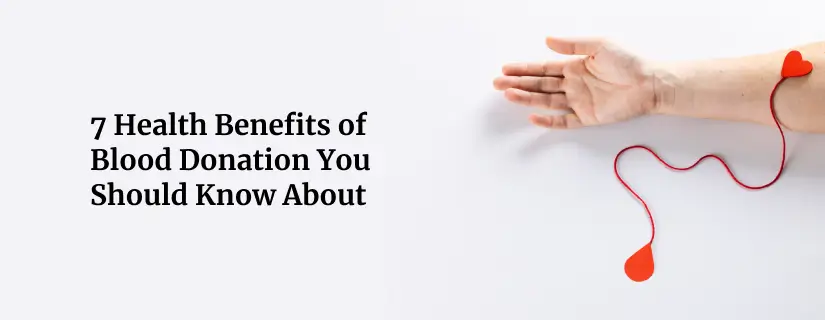
7 Health Benefits of Blood Donation You Should Know About
8 April 2025
Read More
-

Implantation Bleeding Vs Periods: Know the Difference
28 February 2025
Read More
-

Bloating During Ovulation: Symptoms, Causes and Remedies
28 February 2025
Read More
-
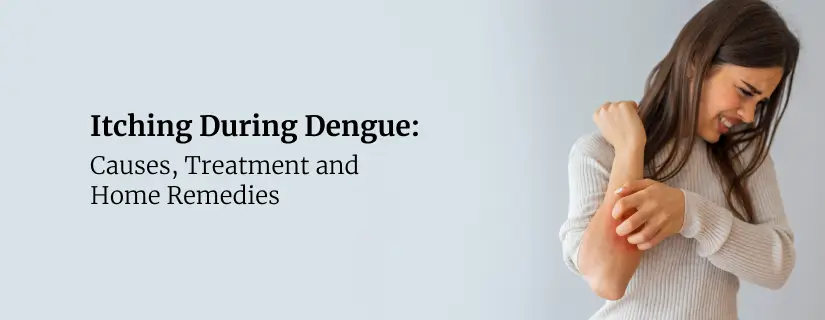
Itching During Dengue: Causes, Treatment and Home Remedies
18 February 2025
Read More
Have a Question?
If you cannot find answers to your queries, please fill out the enquiry form or call the number below. We will contact you shortly.



